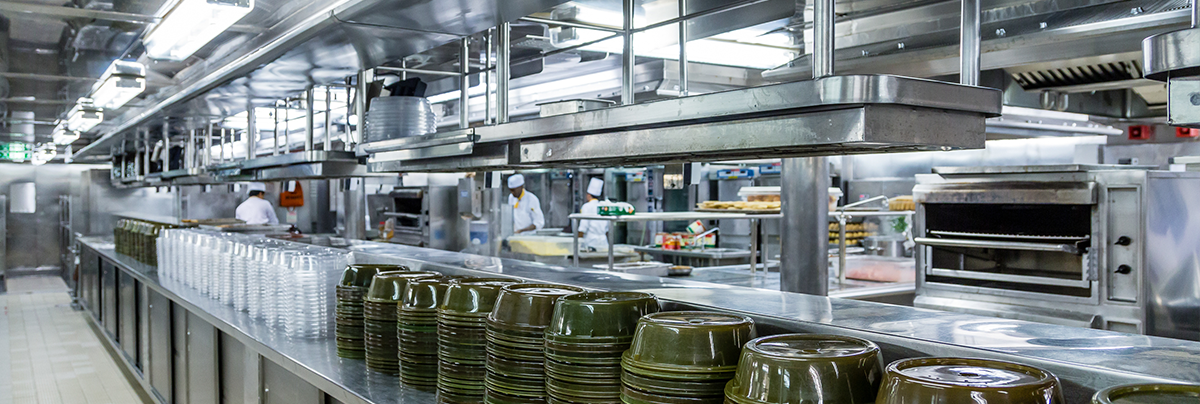Is Technology Taking over the Kitchen?

Have you heard of an automated, robot-operated omelet station?
In this video, a customer steps up to a futuristic-like cafeteria station, although not that much different looking from any hotel or conference-catered breakfast bar. The customer places desired ingredients into a designated basket and chooses between buttons marked for sunny side up or omelet. The only other “human” step? Make sure the plate is placed in its designated spot.
It wasn’t the Joel Robuchon, Daniel Boulud, or Hubert Keller picture-perfect, classically meticulous omelet. It was a cafeteria, quick-serve omelet—nothing pretty but tasty, speedy, and with purpose.
The video shows just how far technology has come. No industry or business sector will be left untouched. A.I. and robots aren’t just coming; they’re here. Let’s take an exploratory look into what’s happening in kitchen technology.
Who’s behind some of these tech advances? What tech devices are leading the charge? What might be coming to our facilities in the near future?
Smart Appliances
Not quite omelet-making robots (we’ll work up to that), but smart appliances are sweeping into the consumer market and trickling into the professional kitchen.
Wi-Fi connectivity, built-in cameras, touchscreens, along with compatible apps, you’d think we were talking about someone’s smartphone. This tech has been piloting a revolution in the home appliance sector since 2016.
You can now view the inside of your refrigerator while you’re at work. From there, you can order your groceries online, to be delivered through an app -incredible. There are developments in the process now that will scan your refrigerator’s contents and place the order for you (as scheduled)!
Processes already available on the market are expanding into smart dishwashers, stoves, and microwaves. Amazon has stepped up with its Alexa technology and compatibility with several brand-name equipment suppliers. Just ask Alexa to monitor your cookies baking in the oven.
How is this smart appliance boom affecting the Foodservice Industry?
Restaurant smart technology is evolving around IoT (Internet of Things). IoT is meant to function as a network between appliances and devices using a digital connection to communicate without using human-to-human or human-to-computer interaction. It would enable kitchens to be remotely controlled. Appliances, product ordering, staffing, and sanitation practices can be monitored remotely and automated.
You’ve probably already seen ovens utilizing smart technology providing “set it and forget it” reassurance. Imagine that scale and comfort set to all your appliances, timekeeping records, POS (Point of Sale), and inventory.
Self-Serve Technology
There are two factions of self-serve technology, what we’ll call: ‘The Total Vending Package’ and the ‘Order Ahead, Avoid the Lines, Kiosks.’
McDonald’s has launched its own line of self-serving kiosks in many of their stores. You’ve probably experienced this tech at a Wawa or Sheetz, although, unlike the Make to Order (MTO), these kiosks act as a cashier. Self-serve technology is already at work in Shake Shack and Taco Bell.
How will vending and self-service impact the Food Service Industry of the future?
It is just further cannon fodder for the ‘food on demand’ trend we’re experiencing now. With third-party food delivery apps and online ordering, delicious food is more accessible than ever.
More ‘online’ experience is already being curated for fine dining and mid-range dining restaurants, feeding into the CRM (customer relationship management) side of software development and overall customer service in our industry, such as tablets for ordering built into tables or servers using tablets for order taking.
Now for the Robots…
Moley – The world’s first robotic kitchen
Moley Robotics has created the first fully automated and intelligent cooking robot. This robot needs its own kitchen style to operate; it is fully integrated with recipes and cooking techniques. A touchscreen unit has a list of recipes, and with just a touch of the finger, the robot cooks, prepares, and cleans up the meal.
The team behind Moley worked with Master Chef Tim Anderson to develop the skills needed to ‘mimic’ the movements of a chef in action. Everything from precision knife cuts to deglazing and garnishing. There is even a development where the robot can learn from you to recreate heirloom family recipes.
Flippy – from Miso Robotics
Flippy is a little different caliber of a robot, still A.I., still tech, but meant for food service, not the home. There are two Flippy options; Flippy at the fryer and Flippy at the grill.
Miso Robotics developed a robotic kitchen assistant that “can learn from its surroundings and acquire new skills over time.”
This robot is complete with integrated support technology. Flippy cleans its equipment, guarantees cooking perfection, and can recognize and monitor cooked products. Flippy is OSHA-compliant and can run for 100,000 hours (about 11 and a half years)! All are monitored through the cloud.
Lastly, this robot has already received job offers, working at Dodger’s Stadium and CaliBurger, with plans for other significant food service operation launches. Robots are not just coming; they are already here.
With restaurants experiencing labor shortages, automation can help improve kitchen operations so businesses can focus on food and service. Are you ready to reduce costs and increase productivity with labor-saving solutions? Reach out to us to learn more about the latest products and trends for automation in foodservice operations.

